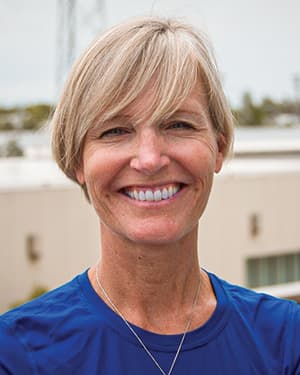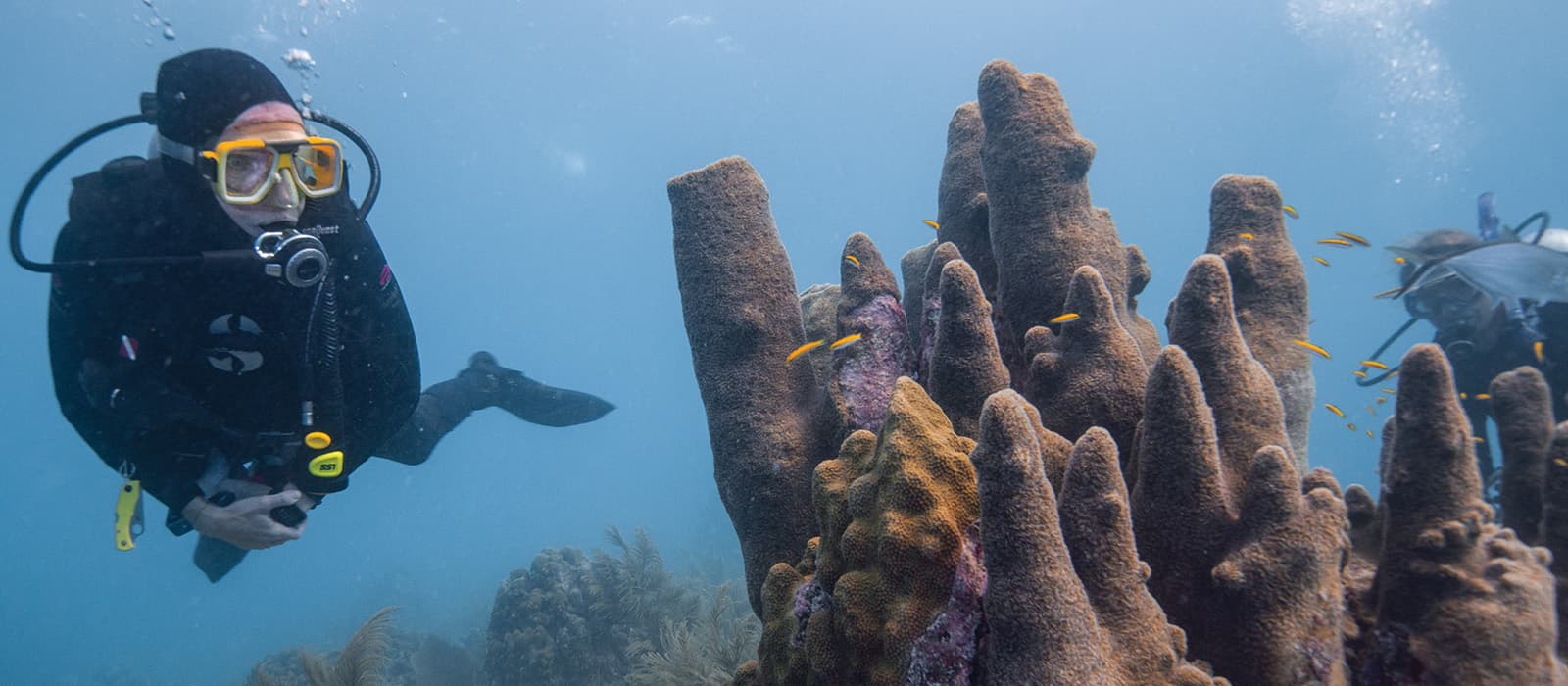Storeis from the Blue: Sarah Fangman

As someone who has spent most of her life trying to protect the ocean, Sarah Fangman stepped up as superintendent of Florida Keys National Marine Sanctuary because she saw it as a challenging opportunity to make a difference. Drawing upon her experiences and accomplishments at Channel Islands and Gray's Reef national marine sanctuaries, Sarah works with a range of partners to protect and restore the only barrier coral reef in the continental United States. This is her Story from the Blue.
I remember when I first discovered my love for the ocean. Growing up in Minnesota, my family escaped the winter one year to Grand Cayman where I spent the entire trip with a mask on my face looking at the amazing life under water. I was captivated.
While in graduate school, I met the superintendent of Channel Islands National Marine Sanctuary and was exposed to how scientific research can be used to inform the management of marine natural resources, so they can be enjoyed and utilized into the future. I served as the research coordinator at the Channel Islands sanctuary for eight years. What I saw during my time in California taught me that when everyone comes together, we can make meaningful progress in marine conservation. I continue to reference the lessons learned from the Channel Islands reserve processes as we consider how to address issues here in the Keys.
I then moved to the East Coast, working collaboratively with Grays Reef, Florida Keys, and Flower Garden Banks national marine sanctuaries for our regional office. Afterwards, I became the superintendent of Gray's Reef National Marine Sanctuary, which protects uniquely pristine habitats off the coast of Georgia. My career then took me down to the Florida Keys, which has many beautiful marine habitats, including coral reefs, seagrass meadows, and mangrove-fringed islands. We are in a critical time, and the choices we make now will make a difference for the future of this sanctuary.
We are in a critical time, and the choices we make now will make a difference for the future of this sanctuary.
I believe that a key to successful sanctuary management is being a good listener—taking the time to hear the suggestions made by local stakeholders who are intimately familiar with the marine resources we're protecting. Our Sanctuary Advisory Council is composed of community members who work together to provide ideas and suggestions to the sanctuary and identify solutions. Over the past few years, we launched a boater education program, a Blue Star Fishing business recognition program, and Mission: Iconic Reefs, all which would not be possible without the help of our community and partners! We were also excited to launch a new Restoration Blueprint for the Florida Keys, after extensive input from community members, partners, and federal and state agencies.
We have a lot of work to do in order to return the ecosystem to a sustainable state. My hope is that our community can come together to ensure a brighter future for our marine environment. I hope that when we look back 20 to 30 years from now, the Florida Keys will be an inspiring example of how to work collaboratively on a local and national level to restore a marine ecosystem.


